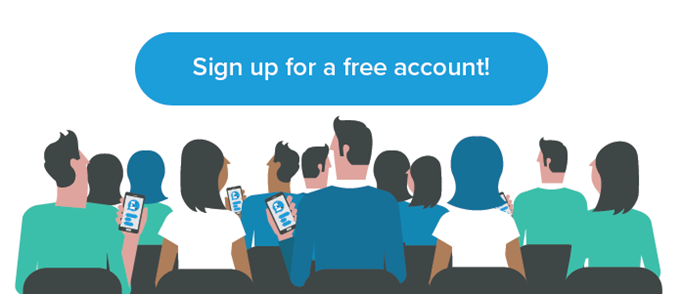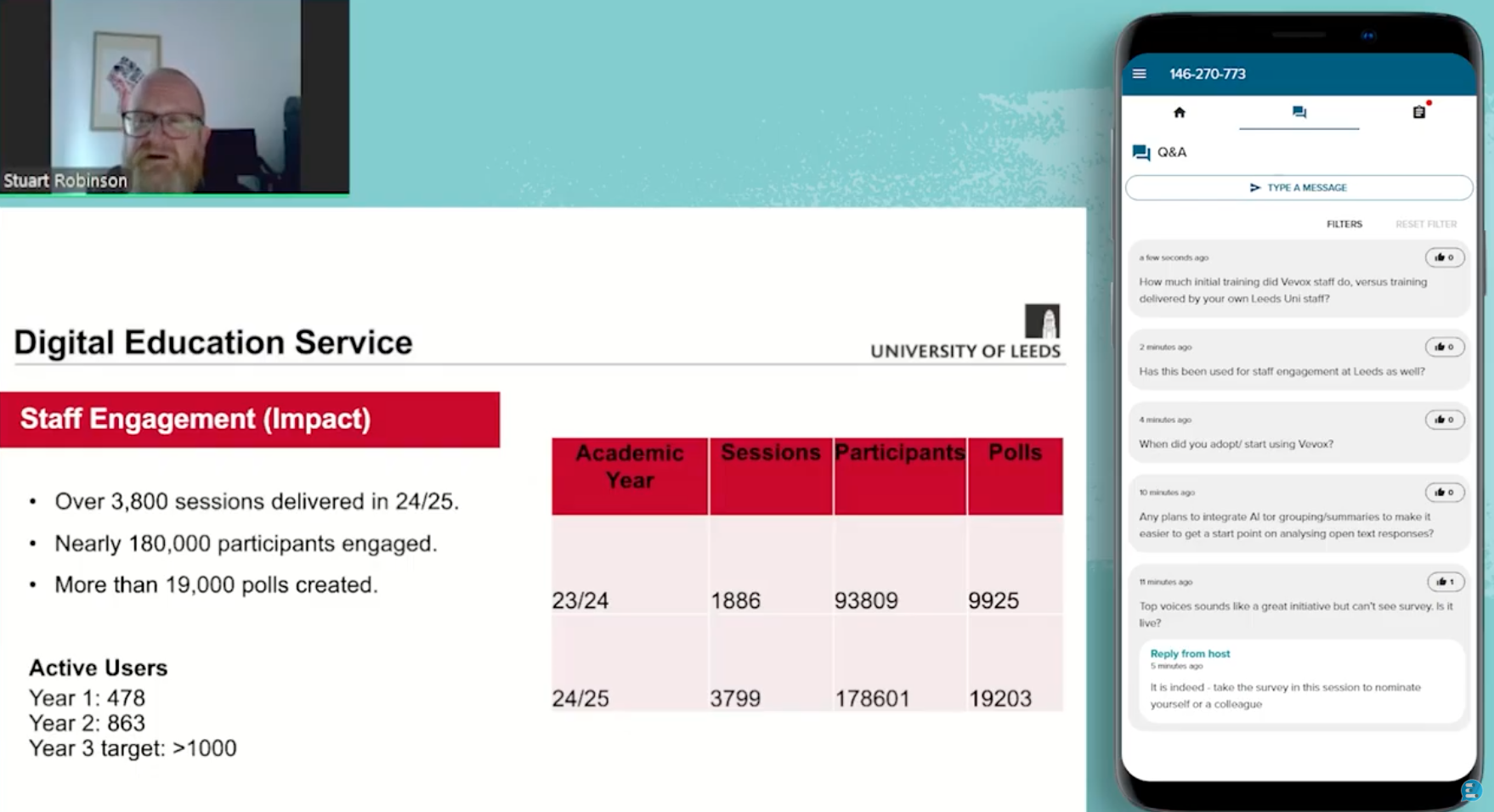‘Clickers’ have been around for 20 years, have sold in their millions globally and are now accepted as a basic tool in many universities, training rooms, large meetings and conferences, alongside text books, notepads and pens. In fact, I last used a clicker as one of a slightly sheepish group being tested during a police-run speed awareness course. And very effective it was too, I might add.
Used to gather feedback, poll opinions or test knowledge levels, clickers are generally credit card-sized number pads that enable a direct communication channel between audiences and the presenter. Often, the results can be shown instantly live on screen in the form of easy-to-read charts.
So, what needs to change?
This stuff still works, right? The need for engagement, feedback channels and instant analysis certainly hasn’t gone away. There has never been a better time to be in the user-generated content, measurable results, factually-based polls and instant analysis space. Just look at some of the surprise results and opinions in the public arena over 2016!
However, it seems users of this technology are falling out of love with the companies that provide these clickers in their droves. And as lock-in terms, leases and warranties expire they are looking for a more up-to-date solution – one that reflects the way students and other audiences expect to interact and engage in the modern world. We’ve been coming across this trend increasingly in the last year - on online forums such as LinkedIn, during conversations with new clients and, most recently, at Bett 2017, the educational event, where it was definitely a recurring ‘hot topic’.
So, what’s the big problem? Well, let’s be honest, in some ways traditional audience response systems such as clickers are becoming increasingly ‘old hat’. Now they are going the way of video cameras, boarding passes, credit cards, calculators, TVs, torches and personal trainers.The phone in our pocket can now do the job just as well, if not better. Until recently, dodgy wi-fi, poor mobile signals, security, access to a suitable device and poorly thrown together apps have kept the demand for clickers alive. But now in most cases, clickers can be replaced – and also improved upon by the use of a mobile app.
In cases where it’s not the right solution, for example where there is no wi-fi, a requirement for all devices to be checked in at the door or where a specialist multifunction device is needed for controlled facilitation, there are non-cloud based servers such as the IML Connector. This is a modern incarnation of the audience response system clicker with qwerty keyboard, synched sponsor screens, high quality microphones and specialist back-end software. These technologies typically require an accompanying service too (in the case of Connector this is provided by Crystal Interactive meetings in the UK and Lumi around the globe).
Little of what I describe is contentious any more. However, what is causing frustration is that, while many providers are moving to apps, they are failing to modernise and adapt how they offer and support these solutions. They seem stuck in the past, or stuck on a revenue model that works for them, but not the modern B2B consumer.
The cost of developing, delivering and supporting these apps is a fraction compared to that involved in providing more conventional audience response systems. So providers should aim at mass uptake by thousands more educational establishments, workplaces and conferences, rather than trying to maintain the same revenue from an existing client base.
When we moved into this space with Vevox, we banished all preconceptions of how we should, or would like to, structure our business and price our offering. Instead we simply asked our clients and potential clients what would work for them.
This engagement continues and our product now has 5-weekly release cycles with new features and improvements (impossible in a hardware and local software-based product). We’re excited by the thousands that are moving to Vevox and by our close collaboration with customers and the users. We’re confident this will mean we are never out of sync. We’re in this together with our customers like any modern customer-focused tech business and if we’re not, we’ll know about it very quickly.
So, if you need to improve audience engagement, albeit in a university, training room or conference hall, there has never been as easier or cheaper time to try it. In fact, our pricing starts at ‘free’ for a fully- functioning app with your logo in it, live polls and dynamic chat/Q&A. If you are struggling with an older legacy system, but worried about making the jump, or wasting previous investments again we can help...
Looking for an alternative to clicker audience responses systems like iClicker or Turning Technologies?
With the gradual shift from hardware to software solutions in audience response systems, Vevox emerges as a compelling alternative to iClicker and Ombea, seamlessly integrating with today's mobile technology. Unlike traditional systems that often required bulky clickers and suffered from connectivity issues, Vevox provides an intuitive app solution that works effortlessly on any smartphone. This marks a significant departure from the limitations faced by users of TurningPoint/Echo 360, offering a more reliable and accessible way to capture audience feedback without the need for dedicated hardware.
The transition from outdated clicker systems like iClicker, Ombea, and TurningPoint/Echo 360 to more sophisticated and flexible solutions mirrors the broader tech industry trend towards app-based interactions. Vevox is at the forefront of this revolution, offering features that cater to the modern user's expectations for instant engagement and feedback. With the ability to conduct live polls, dynamic Q&A sessions, and even offering a 'clicker amnesty' to help users switch from their old systems, Vevox is redefining audience interaction for educational establishments, businesses, and conferences across the globe.
As the digital age progresses, the appeal of traditional clicker-based systems like iClicker, Ombea, and TurningPoint/Echo 360 continues to wane. Vevox is capitalizing on this shift by providing a robust and user-friendly platform that not only meets but exceeds the modern audience's needs for connectivity and interactivity. With regular updates and a customer-focused approach, Vevox is dedicated to staying ahead of the curve, ensuring that its users are equipped with the latest in audience response technology.
So, what about those obsolete clickers?
We’re having a ‘clicker amnesty’. If you’re at a turning point, send us your old system and we promise to do two things:
-Give you at least an equivalent Vevox licence for the next year free of charge.
-Ethically dispose of all the returned clickers and peripheral items, donating any proceeds from salvage to charity. We’ll keep you up to date through our social channels.
All the best,





